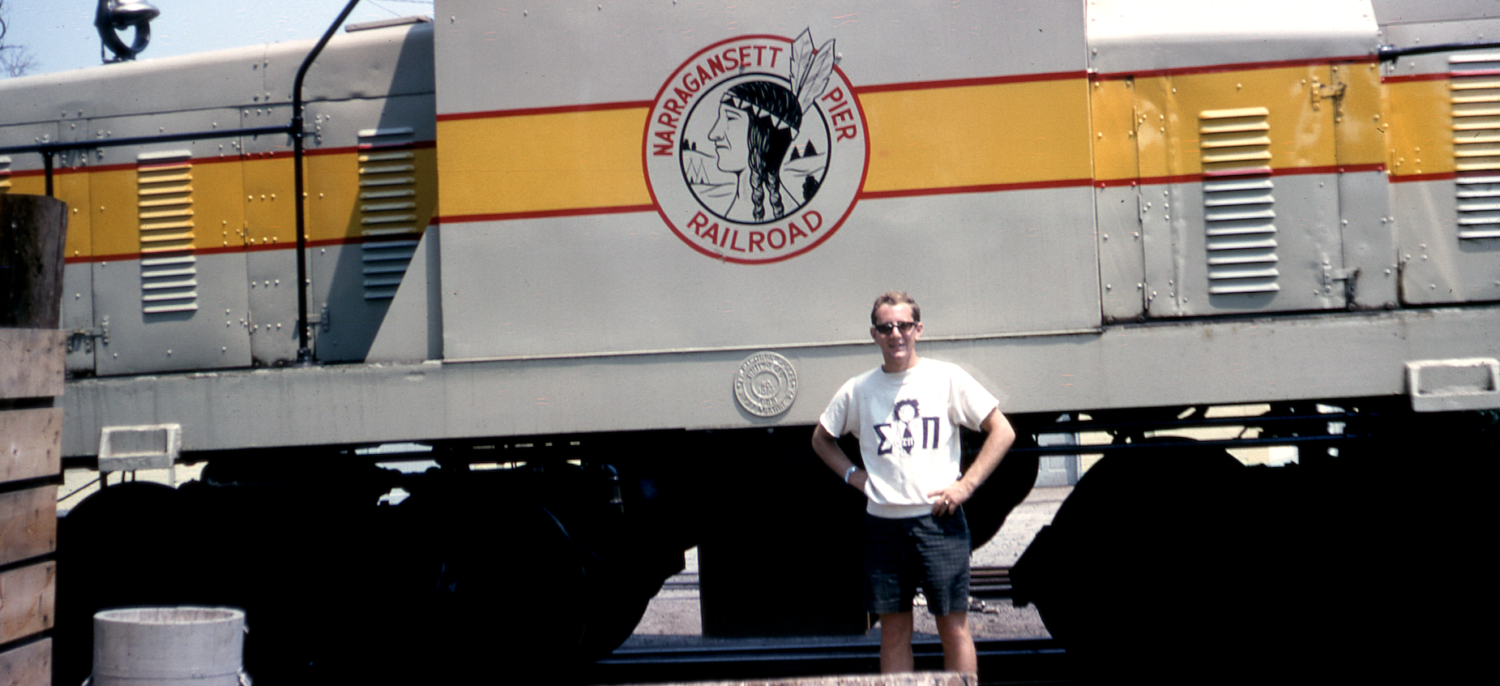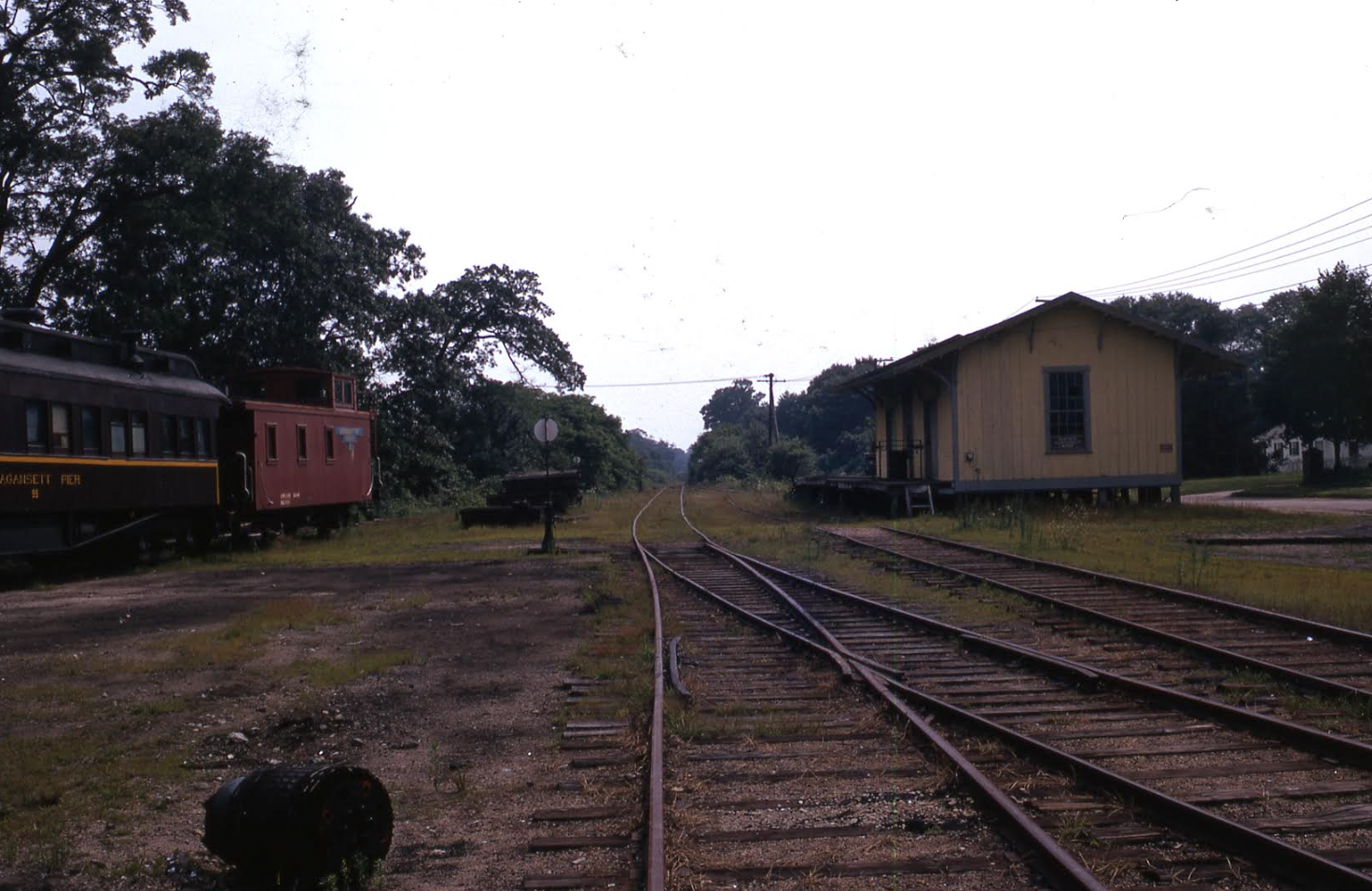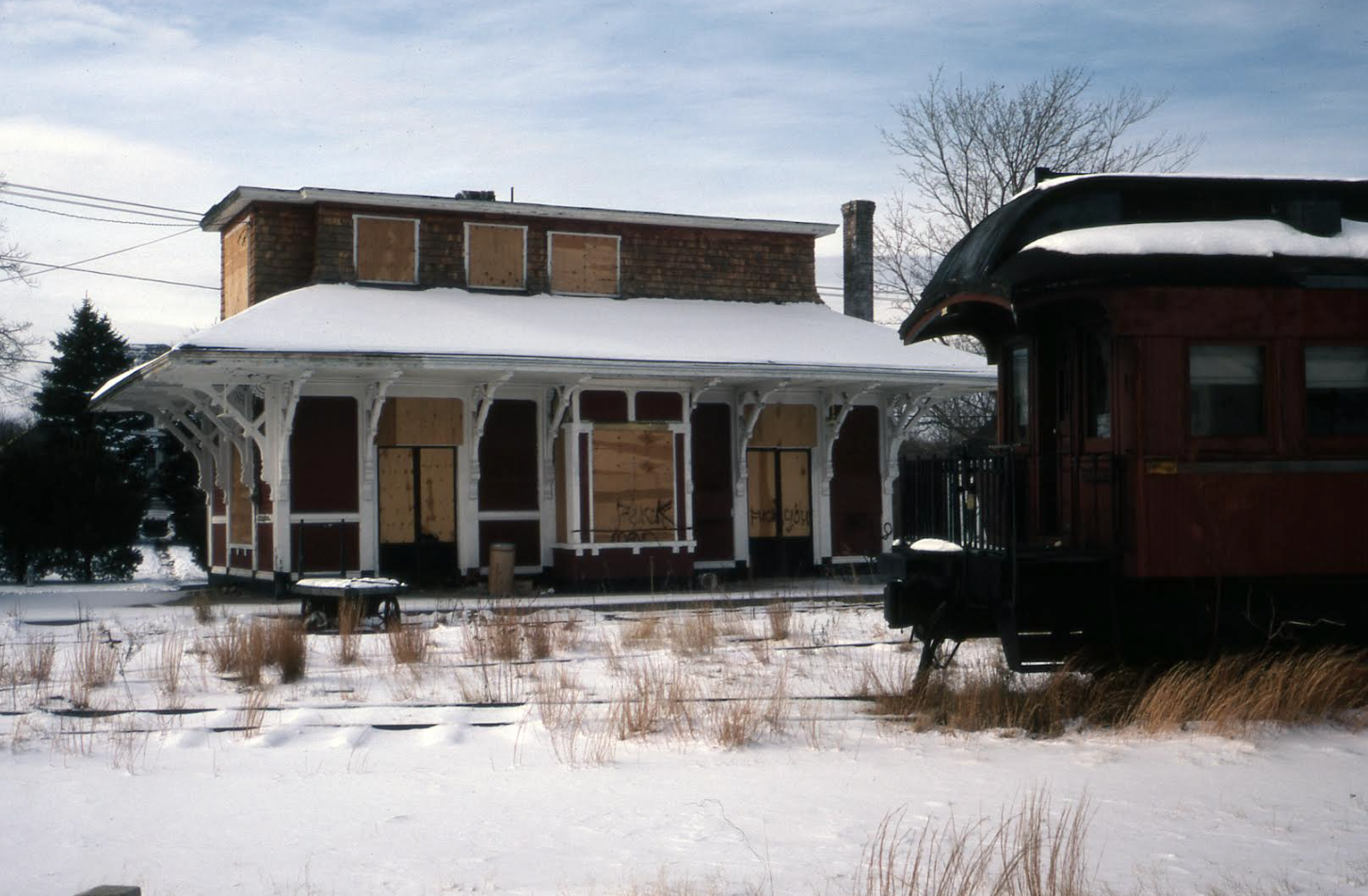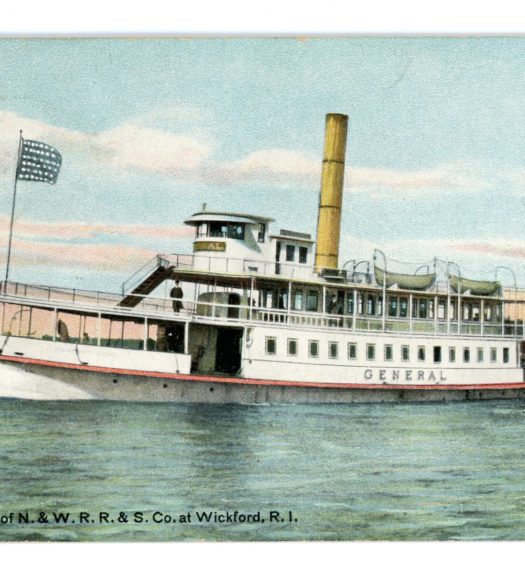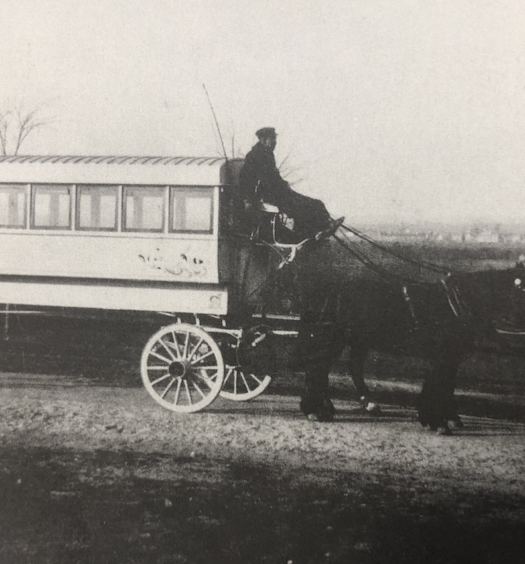In the fall of 1963, I left my native New York City and became an undergraduate freshman at the University of Rhode Island. I chose URI for several reasons. First, I loved the beautiful campus. Second, its College of Engineering had a great reputation. And third, getting to campus and back home was easy. Regarding the latter point, the New Haven Railroad had regular service between Grand Central Terminal and Kingston Station. Being interested in railroads made that last reason especially appealing to me.
Soon after arriving on campus I became aware of a rail line that ran from Kingston Station (in West Kingston) down to Wakefield. I did a little research, which was not easy in those days before Google, Wikipedia, etc., and learned that it was a private short line railroad, the Narragansett Pier Railroad Company (NPRR). I found out that it started operation in 1877 and used to run all the way to Narragansett, but now went only as far as Wakefield. I further learned that the short line for decades had carried both freight and passengers, but since 1952 it just carried freight. Most all of the freight would have been carried in railcars on the New Haven Railroad to Kingston Station and then moved to NPRR railcars. To see more of the railroad, on the first nice Saturday a friend of mine and I walked the entire line, approximately five-and-a-half miles.
That walk got me even more interested in this little railroad. So the other thing I did was write a letter to the railroad, whose office was at the Peace Dale station, asking several questions about the business and operation of the NPRR. To my very pleasant surprise, the president of the company, Robert E. Tucker, promptly wrote back to me with a long and detailed letter answering all my questions, plus additional information I had not even asked about. To this day I am still impressed that the president of the company, even a small one like the NPRR, took the time, and made the effort, to be so kind and thoughtful to a curious college student.
Unfortunately, the NPRR eventually ceased operations and was officially abandoned 1981. Today the former right-of-way is now the South County/William C. O’Neill Bike Path.
Below is a copy of Mr. Tucker’s letter, on NPRR letterhead. And yes, I still have the original copy of the letter.
(After the letter are posted a few of my numerous photographs of railroad stations and rail stock from 1963 to 1981, many of the Narragansett Pier Railroad line).
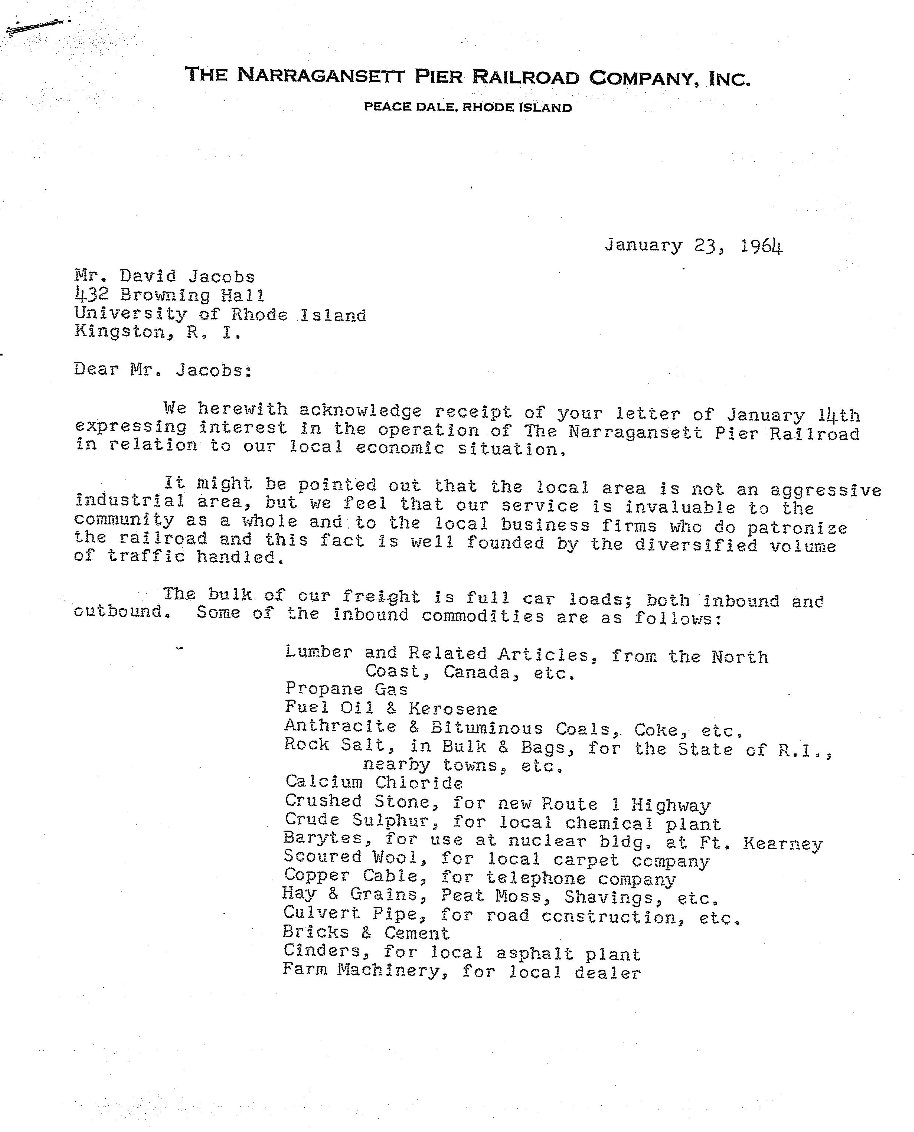
Cover page of letter from Robert E. Tucker to David Jacobs, dated January 23, 1964. Note The Narragansett Pier Railroad Company, Inc. letterhead (David Jacobs Collection)
January 23, 1964
Mr. David Jacobs
432 Browning Hall
University of Rhode Island’
Kingston, R. I.
Dear Mr. Jacobs:
We herewith acknowledge receipt of your letter of January 14th expressing interest in the operation of The Narragansett Pier Railroad in relation to our local economic situation.
It might be pointed out that the local area is not an aggressive industrial area, but we feel that our service is invaluable to the community as a whole and to the local business firms who do patronize the railroad and this fact is well founded by the diversified volume of traffic handled.
The bulk of our freight is full car loads; both inbound and outbound. Some of the inbound commodities are as follows:
Lumber and Related Articles, from the North Coast, Canada, etc.
Propane Gas
Fuel Oil & Kerosene
Anthracite & Bituminous Coals, Coke, etc.
Rock Salt, in Bulk & Bags, for the State of RI, nearby towns, etc.
Calcium Chloride
Crushed Stone, for new Route 1 Highway
Crude Sulphur, for local chemical plant
Barytes, for use at nuclear bldg. at Ft. Kearney [Note to reader: now the University of Rhode Island’s Graduate School of Oceanography at its Narragansett Bay Campus; the small nuclear facility is still in operation]
Scoured Wool, for local carpet company
Copper Cable, for telephone company
Hay & Grains, Peat Moss, Shavings, etc.
Culvert Pipe, for road construction, etc.
Bricks & Cement
Cinders, for local asphalt, plant
Farm Machinery, for local dealer
Some of the Less Than Car Load Shipments received are:
Furniture, for local retail stores
Boats & Canoes, for local marine dealer
Misc. Merchandise for local 5 & 10¢ stores
Religious Printed Material, for local churches
Electric Wiring, Switchboard Parts, etc., for telephone company
Reels Electric Cable, for electric company
Plus, numerous small shipments of various items for the average home owner
From this list you can well see that practically every person in this area is directly or indirectly benefitted by the activity of the Narragansett Pier Railroad.
As to the outbound carload movement, over the past several years we have forwarded the products of the fish processing plant at Galilee, R. I.; the products being:
Fish Oil Residuum, in tank cars
Menhaden Oil, in tank cars
Fish Scrap, in box cars
Fish Meal, in box cars
Again, there is a small activity in LCL shipments outbound; some from businesses. [Note to reader: LCL means Less than Container Load]
Below are listed the inbound and outbound statistics for the past year.
Cars Interchanged at Kingston: 1,648, or 4.58 Cars per Day
Weight of cars:
Inbound 40,596,029 lbs. 20,298 Net Tons
Outbound 16,802,218 lbs. 8,401 Net Tons
TOTAL 57,398,247 lbs. 28,699 Net Tons
Average: 551 Net Tons per Week
As to the matter of rates, as a partial listing, we are parties to the Class and Commodity Tariffs as published by [Note to reader: At this time, railroad shipping rates were set forth in set tariffs that were regulated by the federal government’s Interstate Commerce Commission; rates were deregulated in 1980]:
New England Territory Railroads Tariff Bureau
Trunk Line – Central Territory Railroads Tariff Bureau
Trunk Line – Territory Tariff Bureau, and Jointly with the Southern Freight Bureau
Southwestern Freight Bureau
Central Territory Railroads Tariff Bureau
Trans-Continental Freight Bureau & Western Trunk Lines (Intermountain-Trans Continental)
Trans-Continental Freight Bureau (Pacific Coast – Trans Continental)
Also, specific Commodity Railroad Tariffs
Regarding the subject of history, maps, etc., we are attaching a copy of TRAINS Magazine, May 1963, on Page 47 of which is a feature about the Narragansett Pier Railroad which will furnish you some very interesting material.
We sincerely hope that from the facts as presented here, you will come to believe, as indeed we do, that the successful operation of the Narragansett Pier Railroad Company is making an important contribution to the prosperity and economic well-being of the community we serve.
Yours very truly,
The Narragansett Pier
Railroad Company, Inc.
Robert E. Tucker
President
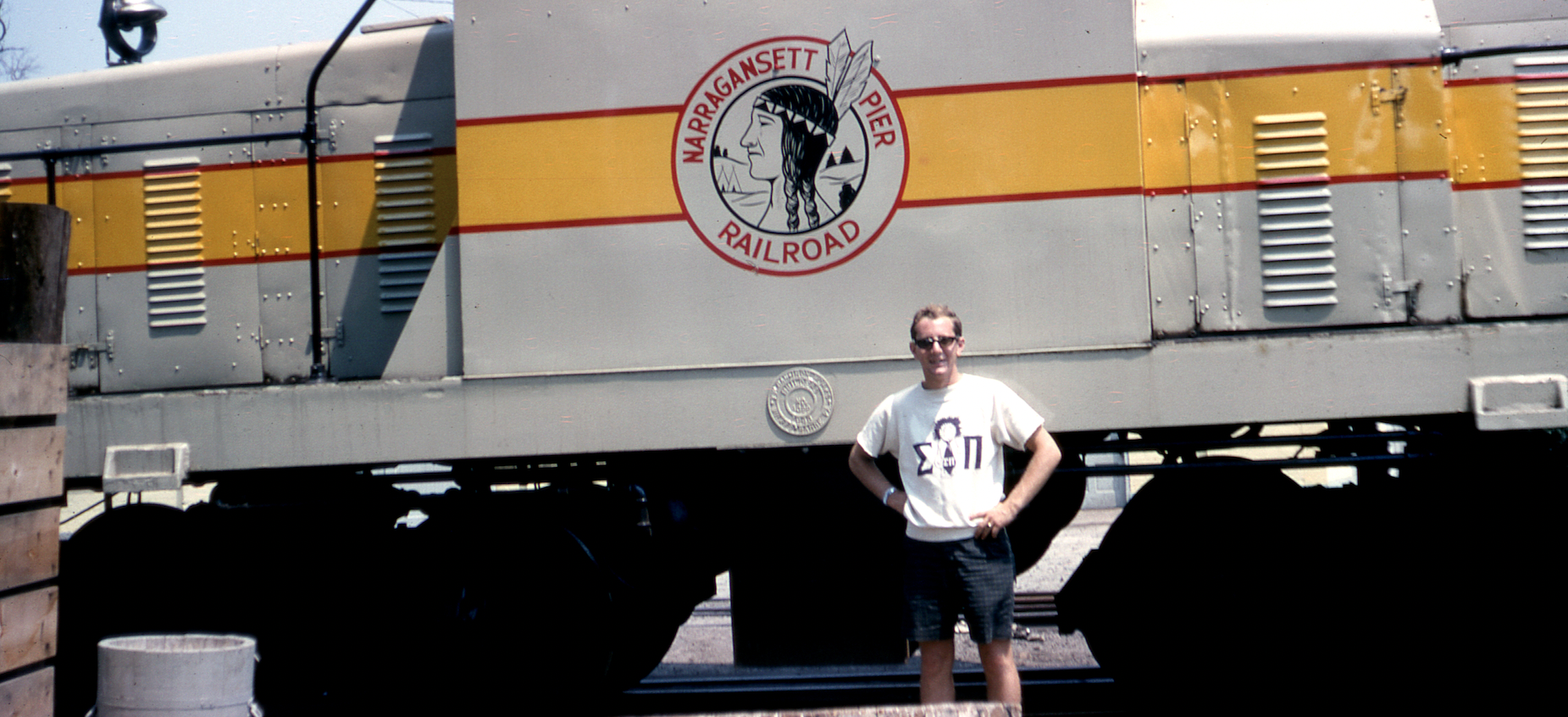
David Jacobs standing in front of a locomotive, engine #40, in July 1965. He is wearing a tee shirt of his fraternity, Sigma Pi. The engine is a GE Vulcan 65-ton, 420 HO diesel-electric. Built in 1943, it was acquired by the NPRR in 1963. Note the Indian logo on the locomotive (David Jacobs Collection)
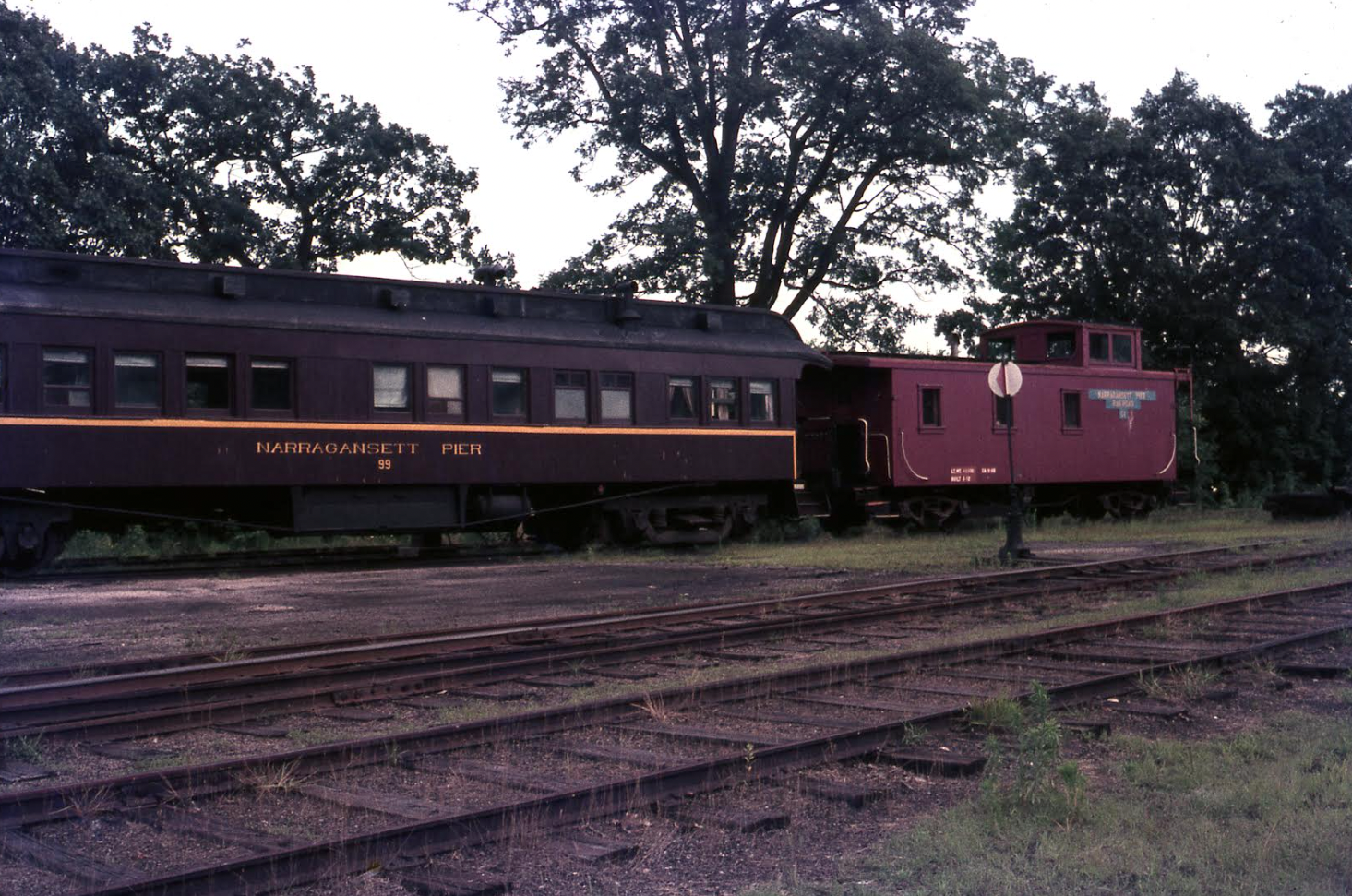
A passenger car at the Peace Dale Station, June 1973. While passenger service had ended in 1952, this car was used to carry tourists for some years thereafter, including David Jacobs (David Jacobs Collection)
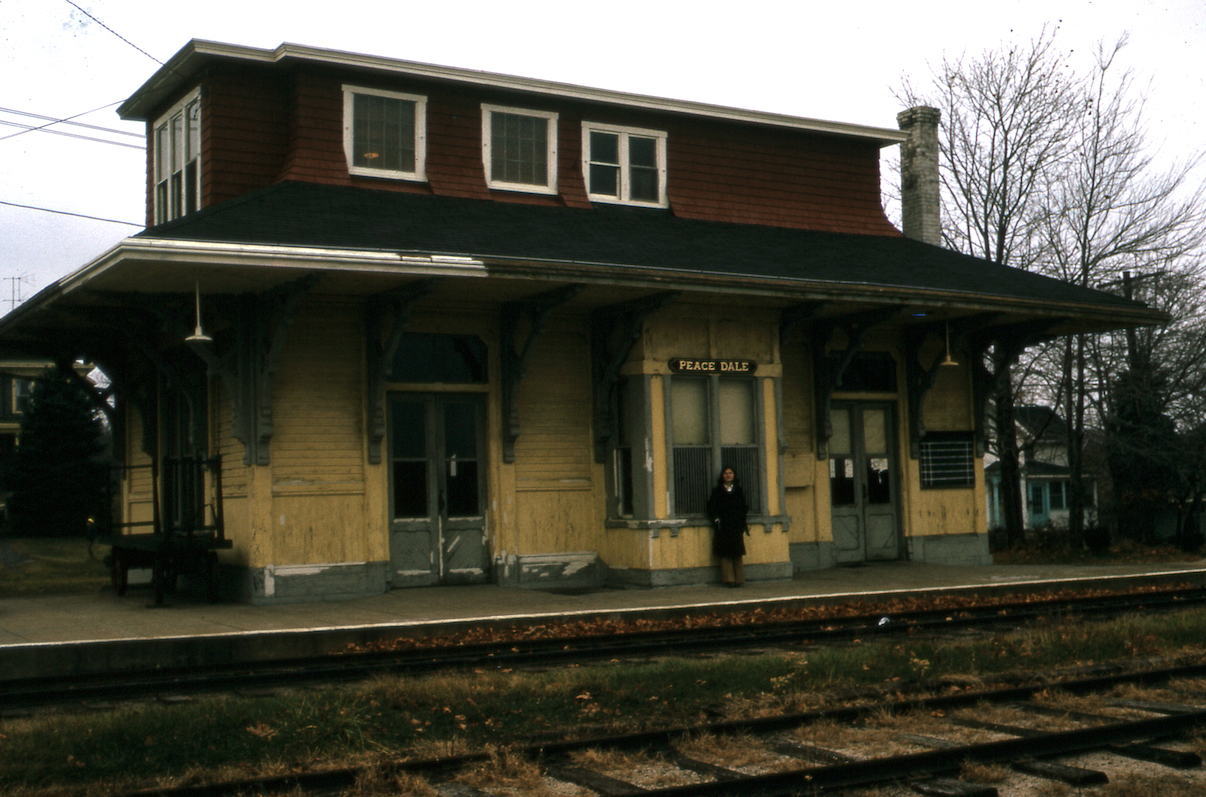
Peace Dale Station in November 1973, with David Jacobs’s girlfriend standing in front (David Jacobs Collection)
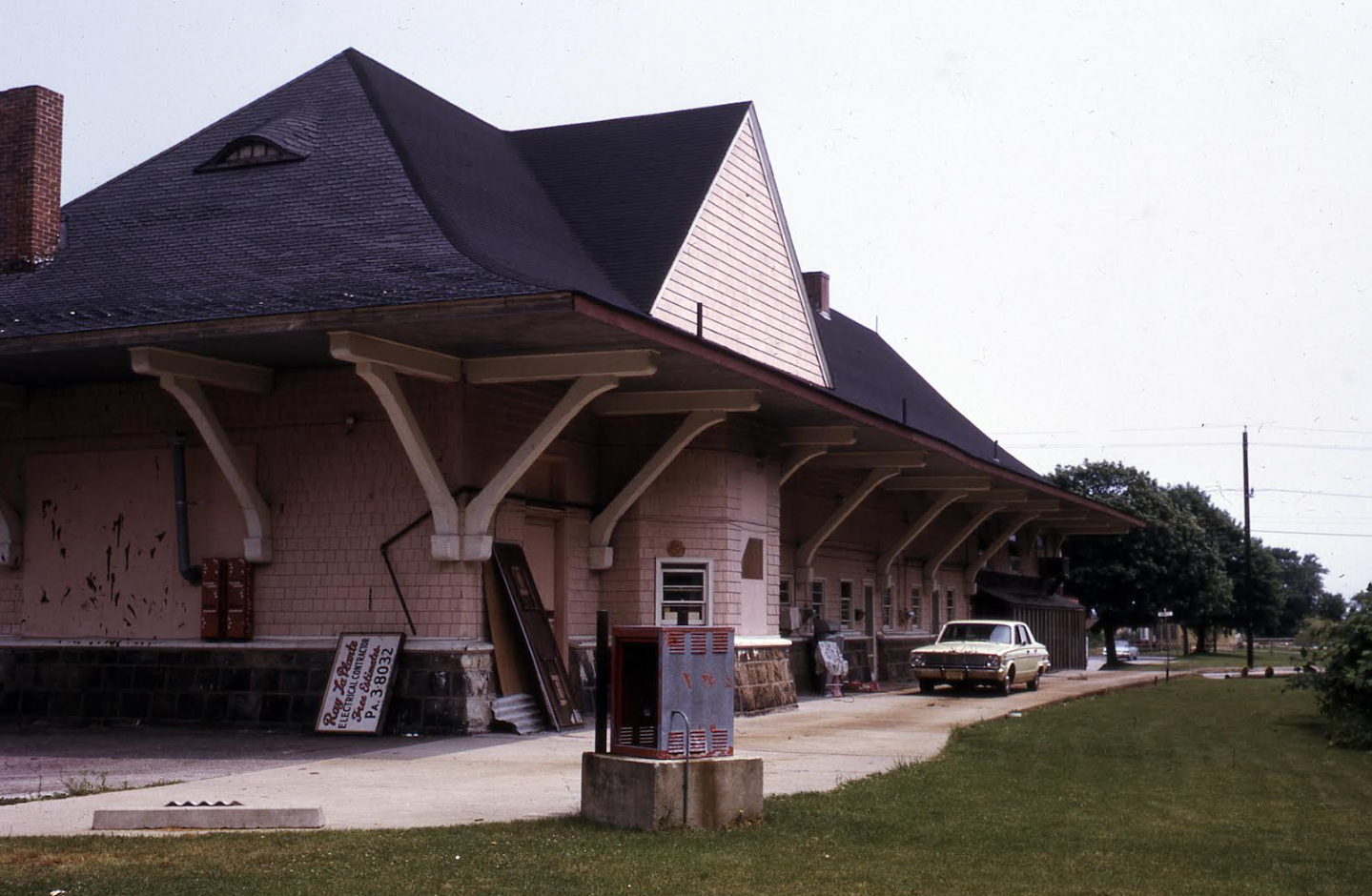
Boone Street Station in Narragansett Pier, June 1974. Closed for many years, it now houses a laundromat and some other businesses (David Jacobs Collection)
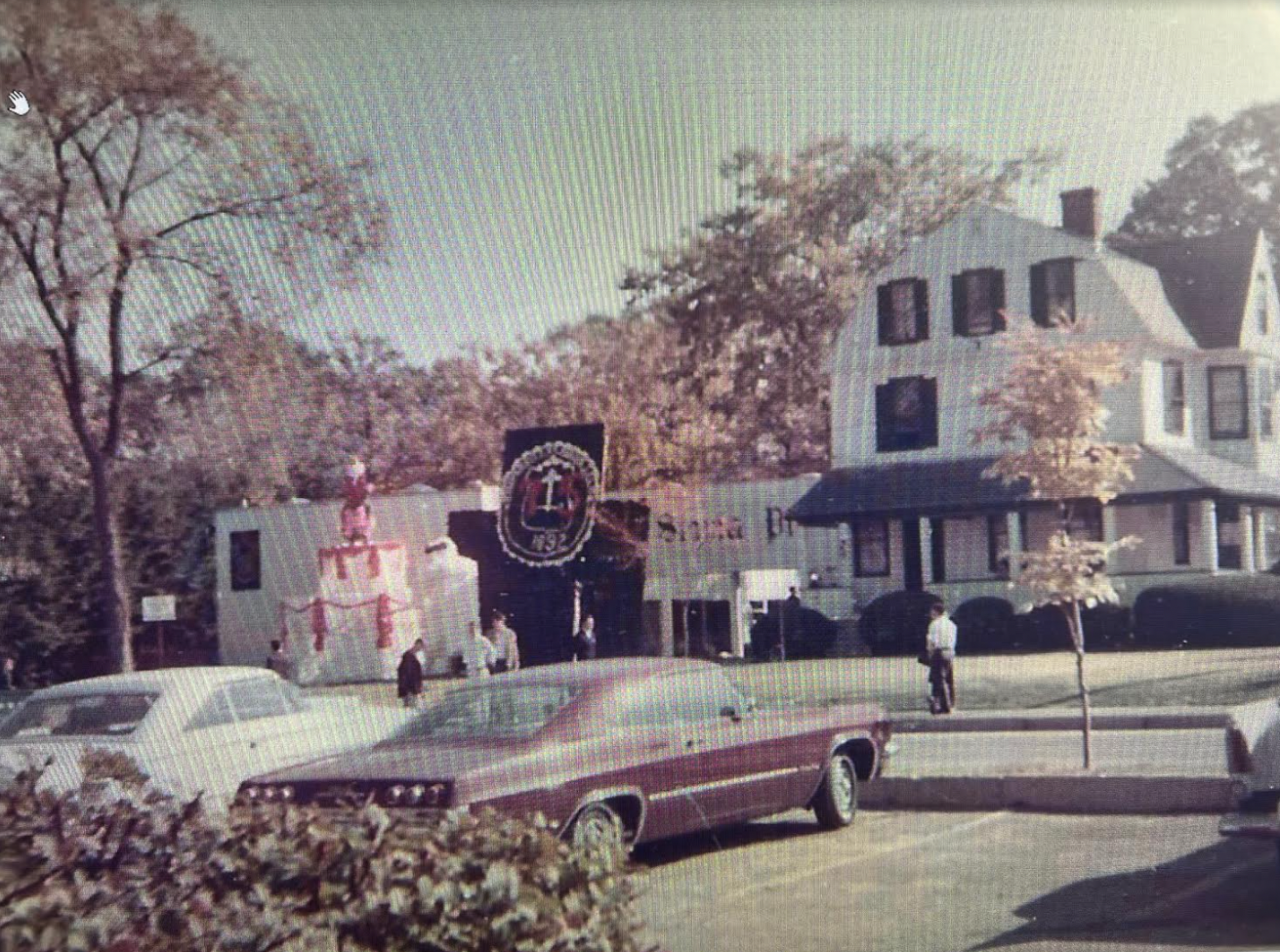
Photograph from 1967 of David’s fraternity house, Sigma Pi, at 99 Upper College Road, directly across the street from East Hall and the Faculty Club building at URI. Tragically, it burned down in a fire in May 1968, the year after David graduated. One student was killed and several were severely burned. The property is now a parking lot (David Jacobs Collection)

